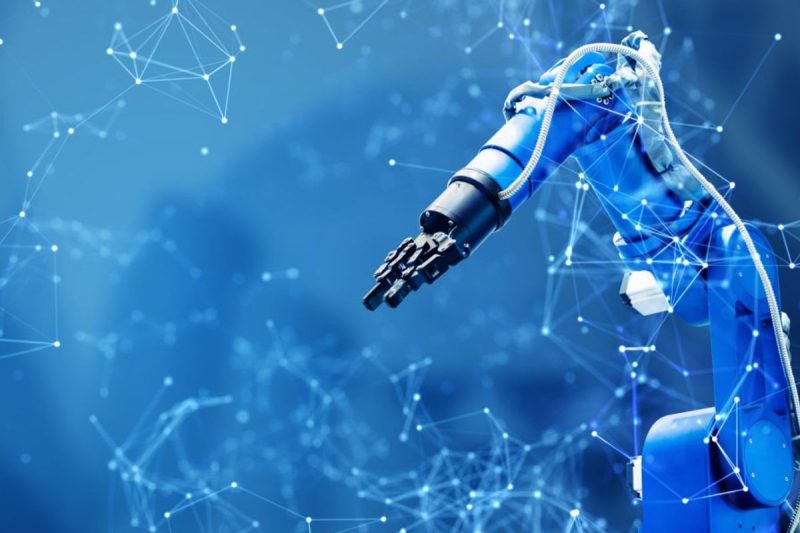Demand for robotic solutions has steadily increased in recent years as industries have become more complex.
According to Precedence Research, the global robotics tech market was valued at US$72.17 billion in 2022 and is expected to reach US$283.19 billion by 2032, representing a compound annual growth rate (CAGR) of 14.7 percent.
With that in mind, some investors are keen to understand the robotics industry and take advantage of its projected growth. Read on to learn about the main trends experts believe could shape the robotics space in 2024.
Diverse sectors turning to robotics innovations
Advances in artificial intelligence (AI) and machine learning have been significant drivers for the robotics industry, and as this technology becomes more accessible, robots are becoming more prevalent.
Case in point — strategists at EY have said developments in AI technology are the key to allowing robots to carry out increasingly complicated tasks. Additionally, improvements made to large language models — a type of AI algorithm used for natural language processing — are helping robots and humans communicate better.
The industrial robotics market is one area that’s expected to keep seeing strength. Research firm Markets and Markets places its 2023 value at US$17 billion, and expects it to grow at a CAGR of 13.8 percent to reach US$32.5 billion by 2028. Industrial robots are used for the movement of goods and materials in large warehouses and distribution centers, where they help improve efficiency, reduce errors and achieve greater workplace safety.
According to the firm, growth will be driven by a trend toward automation and the adoption of Industry 4.0 — the fourth industrial revolution, characterized by increased automation and data exchange — across various sectors, leading to greater demand for collaborative robots, or cobots, a type of robot designed to work alongside humans.
Industrial robots are becoming increasingly affordable as well. Data from ARK Invest reveals that the cost of these robots has declined over the last 10 years to the point that the average price of an industrial robot is now half of what it was in 2011. Signs indicate that the trend will continue, with ARK predicting a further 50 to 60 percent decline by 2025.
While the manufacturing sector may have witnessed the most significant increase in the integration of robots, other industries — such as healthcare and agriculture — are also implementing robots at an increasing rate.
A Grandview Research report on surgical robots estimates that the sector’s size was US$3.92 billion in 2023, and will increase at a CAGR of 9.5 percent by 2030. The firm’s analysts cite the adoption of automated surgical instruments, coupled with a shortage of physicians and surgeons, as key drivers of growth.
And, as the global population continues to grow and demand for food keeps rising, automation is becoming a critical tool for addressing the challenges of modern agriculture. Country Guide named automation as one of seven important trends that will impact the agriculture market in 2024 as the industry attempts to adapt to the climate crisis, recruit younger generations and take advantage of innovative technologies. Full automation could boost some crop incomes by over US$400 per acre per year, according to a report by McKinsey & Company.
A form of farming already employing a heavily automated approach is vertical farming, which is being used all over the world to reduce resource use while improving yield. Additionally, heavy equipment producer John Deere (NYSE:DE) is set to release a line of seven fully automated products including tractors, tillage equipment and construction vehicles capable of “sensing” their surroundings. The anticipated release date for the full system will be sometime in 2030.
Investors interested in the space may want to watch for companies developing easy-to-use, affordable cobots tailored to specific industry needs, as they may be positioned to capture a share of the growing market.
Reshoring fueling push toward automation
In recent years, government incentives have urged businesses to reshore. In the US, the Biden administration has put multiple acts in place to revitalize the country’s manufacturing sector, strengthen supply chains, support manufacturers of all sizes and promote research and development in key industries.
For example, the Chips Act includes grants and tax credits to help offset the cost differential between manufacturing semiconductors in the US and overseas, and the Infrastructure Investment and Jobs Act includes funding for the construction of manufacturing facilities. The most significant is the Inflation Reduction Act, which includes funding, grants and credits for a variety of sectors that are aimed at accelerating the transition to clean energy, counteracting climate change and building up domestic supply chains for technologies such as electric vehicles. These incentives are intended to reduce dependence on foreign manufacturers and create jobs in the US.
However, the cost of labor is rising. As a result, many companies are adopting automation and robotics to reduce their reliance on human workers. In fact, the International Federation of Robotics cites staff shortages as the primary reason that sales of service robots, a type of robot designed to perform tasks or services that are beneficial to humans, were up 48 percent in 2022 compared to 2021. Markets and Markets projects that the service robot industry was valued at US$41.5 billion in 2023 and will grow to US$84.8 billion by 2028 at a CAGR of 15.4 percent.
Rapid development fueling robotics ethics concerns
It’s clear that robotic intervention has many benefits, but the deployment of robots across so many new industries comes with challenges and concerns that must be addressed.
One of the key issues at hand is safety. Ensuring that robots are designed and operated in a way that does not pose a threat to human workers or the public is essential and will be an ongoing issue.
Another concern is the potential impact of automation on employment. While robots can improve productivity and efficiency, they may also displace workers and lead to job losses, potentially disrupting the economy.
According to the World Economic Forum’s Future of Jobs Report 2023, approximately 69 million new jobs will be created by 2027, but around 83 million roles will be eliminated, and technological innovations are one of the major trends behind these changes. Clerk and secretary positions are among the jobs being strongly affected, as they are being replaced by technology more rapidly than other occupations.
Additionally, the increasing use of robots raises ethical questions around who is responsible for the actions of a robot; the potential for misuse or abuse is also a concern. Because of this, the robotics industry, like the AI sector, has been subject to rapid regulation in a short amount of time. As the technology becomes more prevalent, regulation could continue to evolve as issues arise, which may create barriers to entry and slow innovation. As the regulatory environment becomes more complex and new standards emerge, some companies may find it difficult to navigate the market.
Investor takeaway
The robotics industry’s rapid growth is expected to continue in the coming years, and the automation trend is set to create new opportunities for market players and the general public.
However, the deployment of robots also brings challenges and concerns that must be addressed — not only by industry stakeholders, but by policymakers too. As robotics technology continues to evolve, it will be crucial to strike a balance between promoting innovation and ensuring safety and ethical standards are met.
Securities Disclosure: I, Meagen Seatter, hold no direct investment interest in any company mentioned in this article.





























